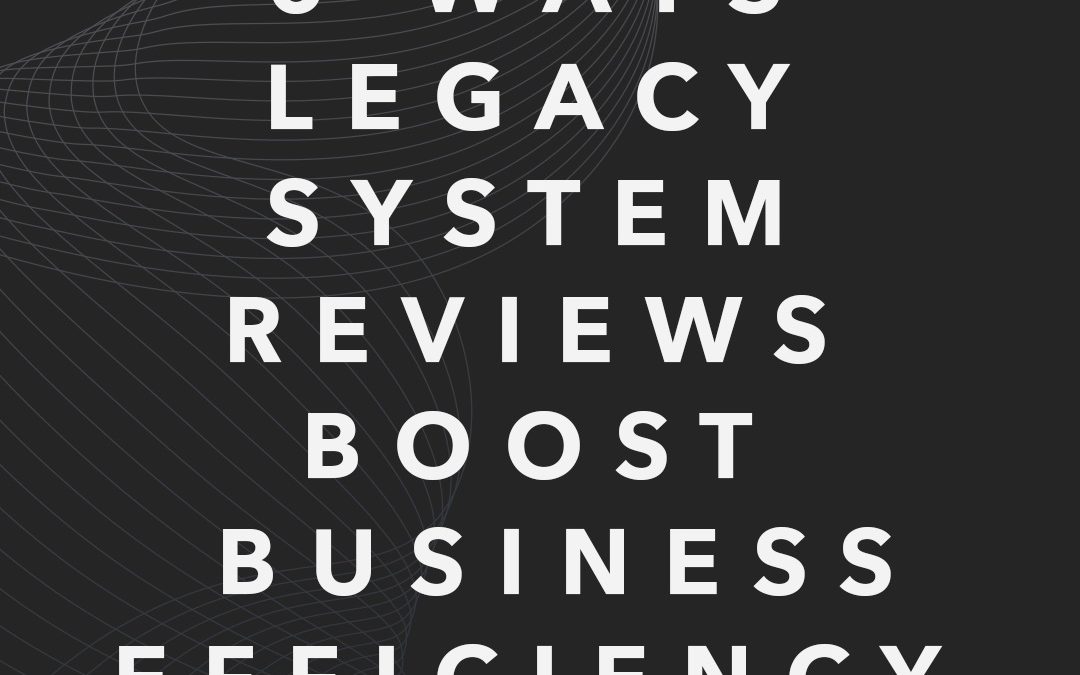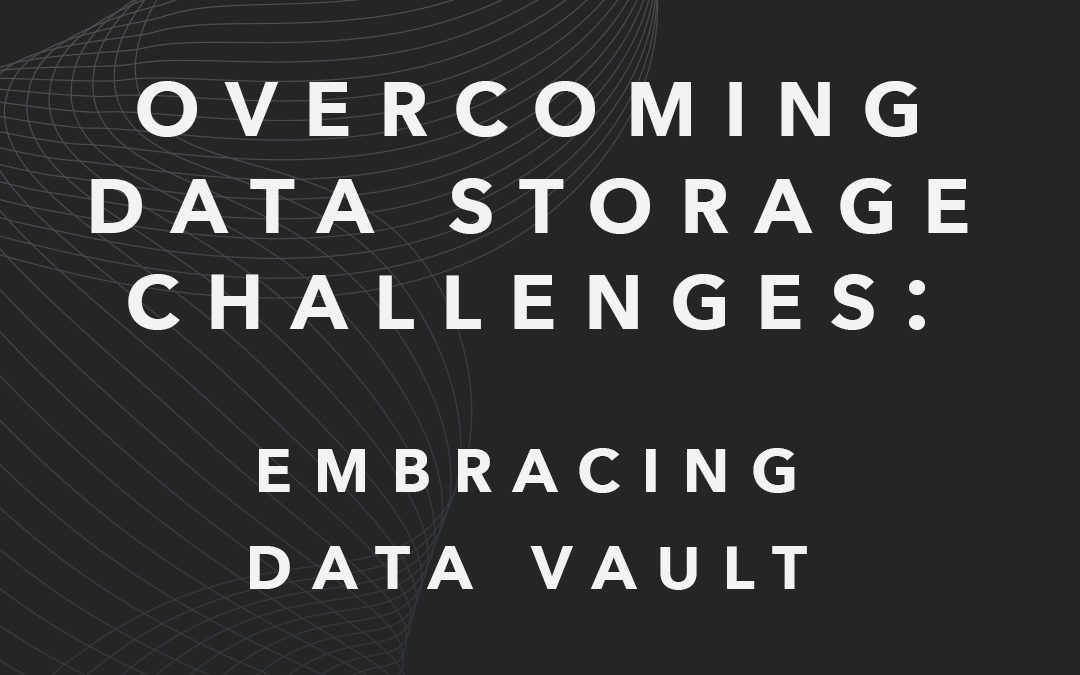
Balancing Innovation and Legacy Systems: Striking the Right Harmony
Balancing Innovation and Legacy Systems: Striking the Right Harmony
Businesses find themselves standing at a crossroads, torn between the allure of innovation and the comfort of legacy systems. It’s a delicate dance, akin to walking a tightrope between embracing the future and honouring the past.
But how can organisations effectively balance the need to innovate with the constraints imposed by legacy systems?
Understanding Legacy Systems
Legacy systems, often deeply ingrained in the fabric of an organisation, represent the technology and software solutions of yesteryear. While once cutting-edge, these systems now face the challenge of keeping pace with rapidly evolving business needs and technological advancements,
These systems may include outdated hardware, software applications, and proprietary technologies that have been in use for many years. Despite their limitations, legacy systems often play a critical role in supporting essential business functions and storing valuable data accumulated over time.
Embracing Innovation
Innovation, the catalyst for progress and growth, holds the promise of unlocking new opportunities and driving competitive advantage.
However, the integration of innovative solutions with existing legacy systems poses a formidable challenge. Organisations must navigate the intricacies of integrating modern technologies, such as cloud computing, artificial intelligence, and IoT, with legacy infrastructure that may lack the flexibility and scalability required for seamless integration.
Additionally, cultural barriers and resistance to change can further complicate the process of embracing innovation with traditional organisational structures.
The Challenges
The clash between innovation and legacy systems gives rise to a myriad of challenges, including:
Compatibility Issues
- Compatibility issues arise when attempting to integrate new technologies with outdated systems that may use different programming languages, data formats, or communication protocols.
Resistance to Change
- Resistance to change among employees who are accustomed to working with familiar legacy systems can hinder the adoption of new technologies and impede organisational progress
Disrupting Established Workflow
- The prospect of disrupting existing operations and risking downtime can deter organisations from embarking on ambitious modernisation initiatives
Strategies for Integration
To navigate the delicate balance between innovation and legacy systems, organisations can deploy various integration strategies.
From modularisation to API-driven development and phased migration, these approaches offer a roadmap for gradual transformation while minimising operation disruptions.
Modularisation involves breaking down monolith legacy systems into smaller, more manageable components that can be updated or replaced independently.
API-drive development facilitates interoperability between legacy systems and modern applications by exposing functionalities as reusable APIs.
Phased migration allows organisations to transition gradually from legacy systems to modern alternatives, mitigating risks and ensuring continuity of operations throughout the transition process.
Legacy System Modernisation
Modernising legacy systems is a multifaceted endeavour that involves upgrading or replacing outdated infrastructure to align with current business needs. This may encompass refactoring code, migrating data to cloud platforms, and adopting agile development methodologies.
Refactoring code involves restructuring existing code bases to improve readability, maintainability, and scalability without altering their external behaviour.
Migrating data to cloud platforms enables organisations to leverage scalable computing resources, enhance data accessibility, and facilitate collaboration across geographically dispersed teams.
Adopting agile development methodologies allows organisations to respond quickly to changing requirements, iterate on solutions, and deliver value to stakeholders in a timely manner.
Cultural Shift and Adaptation
Successful integration of innovation with legacy systems necessitates a cultural shift within the organisiation.
From top leadership down to frontline employees, there must be a shared commitment to embracing change, fostering collaboration, and championing a culture of innovation.
Leaders play a pivotal role in driving cultural transformation by articulating a compelling vision for the future, empowering employees to experiment and take calculated risks, and recognizing and rewarding innovative efforts.
Employees, in turn, must be open to learning new skills, embracing new ways of working, and adapting to evolving technologies and business practices.
Building a culture of trust, transparency, and continuous learning is essential for fostering innovation and driving organisational success.
Risk Mitigation
Mitigating the inherent risks associated with integrating innovation and legacy systems requires a proactive approach.
Organisations must conduct thorough risk assessments, implement security measures, and establish contingency plans to safeguard against potential disruptions.
Risk assessments involve identifying and evaluating potential risks, such as security vulnerabilities, compatibility issues, and operation challenges, and prioritizing them based on their likelihood and impact.
Robust security measures, including encryption, access controls, and intrusion detection systems, help protect sensitive data and mitigate the risks of cyber threats.
Contingency plans outline procedures for responding to and recovering from unexpected events, such as risk failures, data breaches, or natural disasters, to minimise downtime and mitigate business impact.
The Importance of Data Security
In an era, fraught with cyber threats and data breaches, ensuring the security of sensitive information is paramount.
Organisations must prioritize data security when integrating new technologies with legacy systems to mitigate risks and safeguard against vulnerabilities.
Data security encompasses a range of measures aimed at protecting data from unauthorized access, disclosure, alteration, or destruction.
By adopting a proactive approach to data security, organisations can safeguard their reputation, protect customer trust, and avoid costly data breaches that can have far-reaching consequences for their business.
Future-Proofing Strategies
To remain agile and adaptable in the face of technological evolution, organisations must embrace future-proofing strategies.
This entails investing in scalable solutions, staying abreast of emerging trends, and fostering a culture of innovation and continuous improvement.
Scalable solutions enable organisations to flexibly scale resources up or down in response to changing demands, without the need for costly infrastructure investments.
Staying abreast of emerging trends and technologies allows organisations to anticipate future challenges and opportunities, proactively identify areas for improvement, and stay ahead of the competition.
Fostering a culture of innovation and continuous improvement empowers employees to experiment, learn from failure, and adapt to change, driving long-term success and sustainability
Conclusion
To conclude, achieving harmony between innovation and legacy systems is not merely a matter of technological prowess but a testament to organisational agility and adaptability,
By understanding the challenges, embracing strategic integration strategies, and prioritising security and futureproofing, businesses can chart a course towards sustainable growth and competitive advantage.
By fostering a culture of innovation, empowering employees, and leveraging scalable, secure technologies, organisations can navigate the complexities of modern business with confidence and clarity, ensuring long-term success and resilience.





